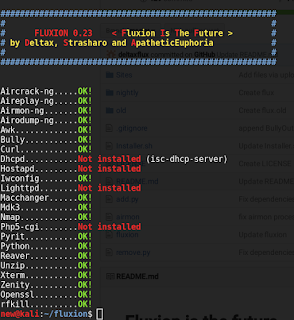Top 5 Websites To Learn How To Hack Like A Pro
You might be surprised to learn just how many people want to learn
how to hack. The stereotype is that of the young college guy – a
computer science major for sure – who spends his evenings and weekends
writing up intricate hacking scripts to break into whatever computer
system he can get his hands on.
The truth is that what was once a male-dominated community is fast
changing into one that includes folks – men and women – from many walks
of life, from many countries and with many backgrounds. A recent CNET
article
about DEFCON
makes note of the fact that claims of sexual harassment and unwanted
advances are increasing. This isn’t because hackers are getting more
obnoxious or offensive, but because more female hackers are entering
into the community and trying to find a home there, only to find
insulting behavior, and other actions unbecoming of a gentleman.
This is the natural evolution of such communities, and in time the
scales will balance and men and women will hack side by side – but when
searching for places to go online to learn how to hack, it’s important
to remember that because demographics and the world itself is changing,
what you’ll find at most of the hacker websites are also changing
significantly as well.
Platforms in use are shifting from computer-based
to more mobile and
tablet
hacking efforts, there’s much greater emphasis on social networks and
the many hacks that are possible there, and all of the other new
technologies and hacker tools available. The sites that keep up with
these changing times will survive, while those that are stuck in the
decades-old mentality of hackerdom-gone-by are doomed to fail.
Where You Can Go To Learn How To Hack Like a Pro
There’s a caveat that I have to share before diving into these sites.
Hacking isn’t a single subject that anyone can pick up overnight. In
the title of this article, I mention hacking like a pro. This can not be
accomplished after reading one article and visiting a few of these
sites – the phrase is used to imply that in time and with lots of
practice, you can in fact learn to hack like a pro.
For our many readers that are already at that expert-hacker level, a
few of these sites may not be for you. They may feel too simple and
basic – for “script-kiddies” as some might say. The truth is, we all had
to start somewhere, and these websites are offered as a starting point
for those people just embarking down the wrote toward hackerdom.
Your intention for learning how to hack is completely your own. I do
not judge. However, it should be noted that there are two forms of
hacking – “white hat” and “black hat”. White hat hackers call
themselves “ethical hackers”, in that they find vulnerabilities simply
to make systems and applications more secure for everyone. However,
there’s a whole
other community of hackers – the black hats –
who find vulnerabilities only to exploit them as much as possible. Now
that you know what sort of community you may be entering, let’s get on
with the list of top sites where you can learn to hack.
#1 – Hacking Tutorial: Tech Tips and Hacking Tricks
Sometimes, perfect English isn’t everything.
Hacking Tutorial
is an example of when the writing skill of the author doesn’t
necessarily equate to the quality of his or her technical knowledge.
This is actually the case over at Hacking Tutorial, where the author
offers articles like “Client Side Attack Using Adobe PDF Escape EXE
Social Engineering”, “Exploiting MS11_003 Internet Explorer
Vulnerability”, and “Hacking Using BeeF XSS Framework”.

The articles are usually short, but actually offer highly technical,
step-by-step instructions on how to do the task at hand, and the tricks
and tweets absolutely work, unless the exploit has been patched. It’s a
small blog, but it’s a good one for the volume of technical tricks that
you’ll find there.
#2 – EvilZone Hacking Forums
While the name,
EvilZone,
isn’t exactly the most inviting – it is easily one of the largest forum
communities that you’ll find on the subject of hacking. With over
13,042 members and over 50,000 posts (and counting), this community
likely has the skills and knowledge to answer any programming question
you could possibly have. Just be careful about coming across as a “noob”
– these guys don’t handle newcomers with kid gloves, so be careful.

You’d definitely be best off working through the programming and
encyclopedia sections first, where you’ll find areas with projects,
tutorials and a lot more that will help you become educated and
well-versed in hacking techniques and terminology.
#3 – Hack a Day
While I certainly don’t want to offer a nod to any blogs that may be
considered competition, you really have to give credit where credit is
due when it comes to a particular niche like hacking – and
Hack a Day
definitely offers an amazing library of information for anyone looking
for specific categories like cellphones, GPS or digital cameras. Over
the years, Hack A Day has transformed the site into a fairly popular
blog.

More than any other site, this particular “hacking” site is very much
hardware based, and they redefine the meaning of the word hacking by
helping you learn how to hack up electronic devices like a Gameboy or a
digital camera and completely modifying it, or building electronics for
the sole purpose of hacking other commercial devices. You’ll also find a
popular and busy forum section as well – a high point of the site.

While I personally don’t find the articles themselves very detailed
(as an EE, I like schematics and elaborate descriptions), the site makes
up for it with video demonstrations throughout.
#4 – Hack In The Box
Hack In The Box has really change significantly through the years. It
is rebranded as HITB, and the site is completely transformed into what
looks like a WordPressed-based platform. Still, today
Hack In The Box remains
focused on security and ethical hacking. However, it has obviously
shifted gears at some point and changed to a more content-focused
approach with a greater volume of news, and fewer in-depth articles with
detailed hacks.

This transition makes it less of a place to go for actually technical
hacking tips, and more of a daily spot to get your latest fix of
hacking news. The site is updated frequently, and of course you can also
go for the print version of the HITB-branded
magazine if you want.

Clearly, HITB has gone very commercialized, but it is a great
resource for news for anyone interested in the latest gossip throughout
the hacking community.
If you like the post please share it ... :)





































